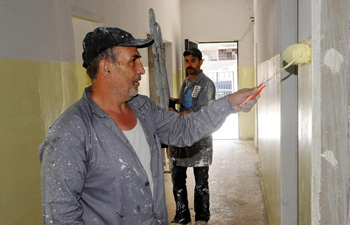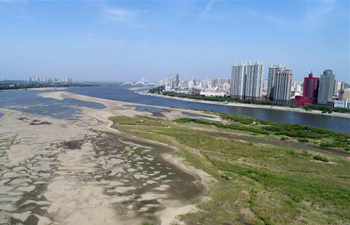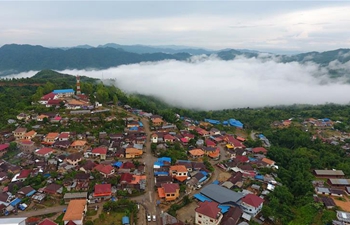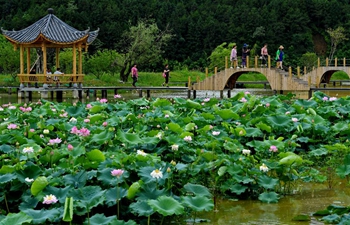SHENYANG, June 3 (Xinhua) -- An abandoned electroplating factory in northeast China's Shenyang has become a popular art zone.
The two-storey creative zone in Jiansheda Road covers 1,500 square meters. Besides its modern interior, the architect kept its original red brick and steel structure just as it was as an electroplating factory 20 years ago.
"I like the industrial design. It gives you a sense of the times," said Chai Rui, a citizen of Shenyang.
The transformation of the factory is part of a campaign to preserve industrial architecture, turning abandoned buildings into creative areas, public sports zones and nursing homes to protect the historical sites as well as transforming them into new growth drivers.
"I really like the art here, especially the Shadow Puppet candle holder," said Chai Rui. "Once you light up the candle, a shadow is cast on the wall. It's very interesting."
The first floor of the zone has food stalls with names such as "House of Flying Daggers." Visitors can enjoy their meals in a Jeep. The second floor has stalls selling handmade soap, a ceramics workshop and a paper doll factory.
The creative zone is the fourth transformation in Shenyang, following an industrial museum, a workers' village and a creative industrial park, all built in abandoned factories.
The success of these projects including Beijing's 798 art district, Tianjin's Mian3 creative blocks and Nanjing's Xinjie8shi8 creative street, have greatly aided transformations from industrial zones to de-industrialization.
Chinese people are now re-recognizing the value of the industrial heritage, said Wang Jinshan, deputy director of the faculty of humanities of Inner Mongolia University of Finance and Economics.
"The abandoned factories are of great value in culture and society. They are normally located in downtown areas, so with proper use, cities can develop while protecting their historical and cultural heritage," Wang said.

















